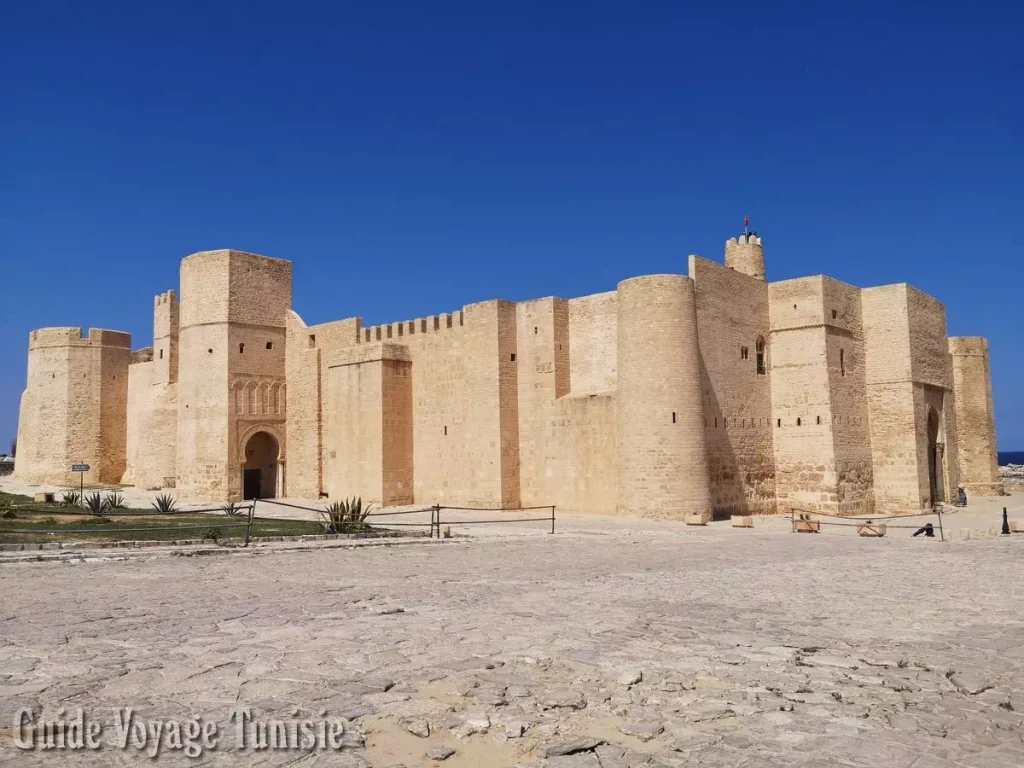The Ribat of Monastir
The Ribat of Monastir is the oldest and most important of the defensive works erected along the Maghreb coast by the Arab conquerors at the dawn of Islam. Located on the shores of the Mediterranean Sea, in the city of Monastir, it is indeed regarded as the flagship monument, it is undoubtedly the most important and oldest ribat in the Maghreb.
Founded in 796, this building underwent several renovations during the medieval period. Initially in the shape of a quadrilateral, it is made up of four bodies of buildings overlooking two interior courtyards. In addition to the small cells of the “monk-warriors” who, while carrying out their military duties, devoted themselves to prayer and contemplation, the Ribat houses the prayer room, the most spacious of which now houses a rare collection. objects of worship and craftsmanship from medieval times.
During the 15th, 17th and 18th centuries, enlargements and fortifications were carried out. During the 9th century, under the reign of the Aghlabids, it was enlarged on the northern side, then around 966, under the reign of the Fatimid dynasty on the southern side, then around 1424, during the Hafsid period, works were carried out throughout by significantly increasing its surface area to reach 4,200 m2.
From the 17th to the 18th century, polygonal and circular towers and bastions as well as numerous buttresses were added so that the building could accommodate artillery pieces. The Arab traveler, chronicler and geographer Ibn Hawqal declared as early as the 10th century that the building is the largest Ribat in all of Africa.
The building that we can indeed admire today is the result of a long evolution during which enlargements and transformations followed one another. We note that the core of the building originally has a regular plan with massive facades accompanied at the corners of cylindrical towers, of which the one located to the south-east is the lookout tower. Its courtyard is bordered on 3 sides by 2 or 3 floors of cells, where stands the watchtower, the “Nadhour”, which is composed of a hundred spiral steps of nearly twenty centimeters each. Access to this tower is well permitted to visitors to be able to enjoy a beautiful view of the entire monument and the entire bay of Monastir.
The entrance to the Ribat opens at the foot of a polygonal tower; a bent corridor, flanked by guardrooms, leads to the courtyard where a high circular tower “Le Nadhour” rises in its corner. From the top of this tower, the visitor can admire a superb view of the city of Monastir and the infinite blue of the sea.
The southern wing remains of this primitive ribat, which includes the entrance porch, the watchtower crowned by a crenellated railing, the south-west tower, and the prayer room which is located upstairs. The enlargement of the building during the 10th century is materialized by the addition of a pavilion which separates it from the primitive facade by a courtyard. While containing two bays and a barrel-vaulted oratory upstairs which is divided into 7 naves perpendicular to the wall of the Qibla and semicircular and basket-handle arches rest on cruciform pillars. To cope with the threats of invasions during the Hafsid period, the defenses of the monument were reinforced, a work continued under the reign of Hussein II Bey (1824-1835) who restored the entire building with the addition of towers and of strongholds.
Indeed, in the ribat of Monastir, an interesting museum of Islamic arts is installed in the old oratory in which one can discover fabrics of any beauty, superb manuscripts in Kufic writing, ceramic objects, glassworks, and miniatures from different eras, all testifying to the presence of a brilliant civilization.

